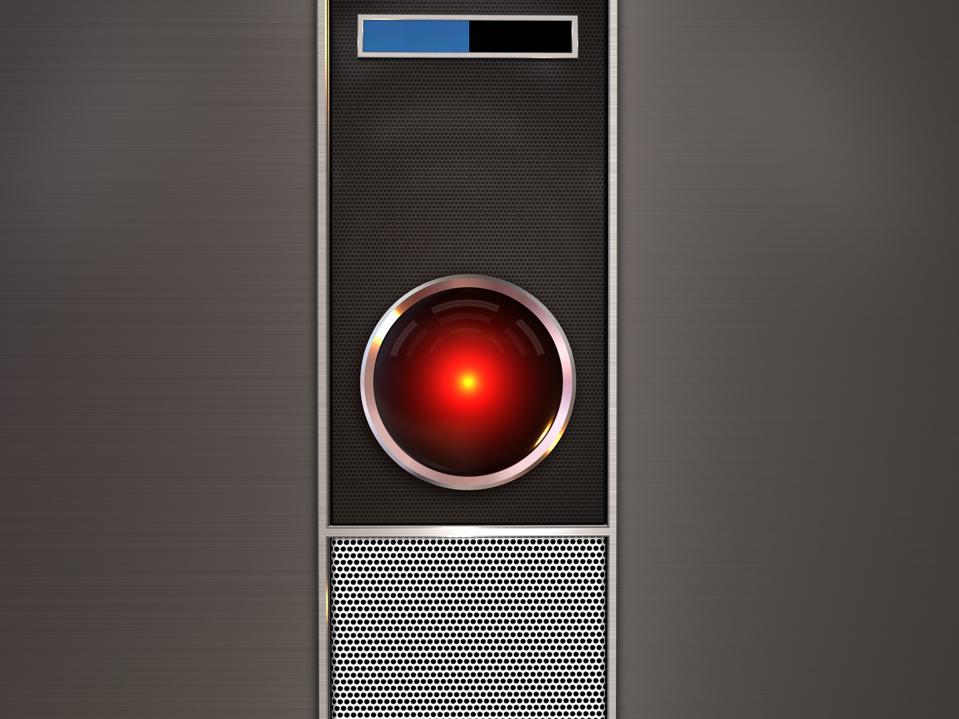Sixty-five years ago, 10 computer scientists convened in Dartmouth, NH, for a workshop on artificial intelligence, defined a year earlier in the proposal for the workshop as “making a machine behave in ways that would be called intelligent if a human were so behaving.”
Copyright by: www.forbes.com
 It was the event that “initiated AI as a research discipline,” which grew to encompass multiple approaches, from the symbolic AI of the 1950s and 1960s to the statistical analysis and machine learning of the 1970s and 1980s to today’s deep learning, the statistical analysis of “big data.” But the preoccupation with developing practical methods for making machines behave as if they were humans emerged already 7 centuries ago.
It was the event that “initiated AI as a research discipline,” which grew to encompass multiple approaches, from the symbolic AI of the 1950s and 1960s to the statistical analysis and machine learning of the 1970s and 1980s to today’s deep learning, the statistical analysis of “big data.” But the preoccupation with developing practical methods for making machines behave as if they were humans emerged already 7 centuries ago.
1308: Catalan poet and theologian Ramon Llull publishes Ars generalis ultima (The Ultimate General Art), further perfecting his method of using paper-based mechanical means to create new knowledge from combinations of concepts.
1666: Mathematician and philosopher Gottfried Leibniz publishes Dissertatio de arte combinatoria (On the Combinatorial Art), following Ramon Llull in proposing an alphabet of human thought and arguing that all ideas are nothing but combinations of a relatively small number of simple concepts.
1726: Jonathan Swift publishes Gulliver’s Travels, which includes a description of the Engine, a machine on the island of Laputa (and a parody of Llull’s ideas): “a Project for improving speculative Knowledge by practical and mechanical Operations.” By using this “Contrivance,” “the most ignorant Person at a reasonable Charge, and with a little bodily Labour, may write Books in Philosophy, Poetry, Politicks, Law, Mathematicks, and Theology, with the least Assistance from Genius or study.”
1755: Samuel Johnson defines intelligence in A Dictionary of the English Language as “Commerce of information; notice; mutual communication; account of things distant or discreet.”
1763: Thomas Bayes develops a framework for reasoning about the probability of events. Bayesian inference will become a leading approach in machine learning.
1854: George Boole argues that logical reasoning could be performed systematically in the same manner as solving a system of equations.
Thank you for reading this post, don't forget to subscribe to our AI NAVIGATOR!
1865: Richard Millar Devens describes in the Cyclopædia of Commercial and Business Anecdotes how the banker Sir Henry Furnese profited by receiving and acting upon information prior to his competitors: “Throughout Holland, Flanders, France, and Germany, he maintained a complete and perfect train of business intelligence.”
1898: At an electrical exhibition in the recently completed Madison Square Garden, Nikola Tesla demonstrates the world’s first radio-controlled vessel. The boat was equipped with, as Tesla described it, “a borrowed mind.”
1910: Belgian lawyers Paul Otlet and Henri La Fontaine establish the Mundaneum where they wanted to gather together all the world’s knowledge and classify it according to their Universal Decimal Classification.
1914: The Spanish engineer Leonardo Torres y Quevedo demonstrates the first chess-playing machine, capable of king and rook against king endgames without any human intervention.
Read more: www.forbes.com


Sixty-five years ago, 10 computer scientists convened in Dartmouth, NH, for a workshop on artificial intelligence, defined a year earlier in the proposal for the workshop as “making a machine behave in ways that would be called intelligent if a human were so behaving.”
Copyright by: www.forbes.com
1308: Catalan poet and theologian Ramon Llull publishes Ars generalis ultima (The Ultimate General Art), further perfecting his method of using paper-based mechanical means to create new knowledge from combinations of concepts.
1666: Mathematician and philosopher Gottfried Leibniz publishes Dissertatio de arte combinatoria (On the Combinatorial Art), following Ramon Llull in proposing an alphabet of human thought and arguing that all ideas are nothing but combinations of a relatively small number of simple concepts.
1726: Jonathan Swift publishes Gulliver’s Travels, which includes a description of the Engine, a machine on the island of Laputa (and a parody of Llull’s ideas): “a Project for improving speculative Knowledge by practical and mechanical Operations.” By using this “Contrivance,” “the most ignorant Person at a reasonable Charge, and with a little bodily Labour, may write Books in Philosophy, Poetry, Politicks, Law, Mathematicks, and Theology, with the least Assistance from Genius or study.”
1755: Samuel Johnson defines intelligence in A Dictionary of the English Language as “Commerce of information; notice; mutual communication; account of things distant or discreet.”
1763: Thomas Bayes develops a framework for reasoning about the probability of events. Bayesian inference will become a leading approach in machine learning.
1854: George Boole argues that logical reasoning could be performed systematically in the same manner as solving a system of equations.
Thank you for reading this post, don't forget to subscribe to our AI NAVIGATOR!
1865: Richard Millar Devens describes in the Cyclopædia of Commercial and Business Anecdotes how the banker Sir Henry Furnese profited by receiving and acting upon information prior to his competitors: “Throughout Holland, Flanders, France, and Germany, he maintained a complete and perfect train of business intelligence.”
1898: At an electrical exhibition in the recently completed Madison Square Garden, Nikola Tesla demonstrates the world’s first radio-controlled vessel. The boat was equipped with, as Tesla described it, “a borrowed mind.”
1910: Belgian lawyers Paul Otlet and Henri La Fontaine establish the Mundaneum where they wanted to gather together all the world’s knowledge and classify it according to their Universal Decimal Classification.
1914: The Spanish engineer Leonardo Torres y Quevedo demonstrates the first chess-playing machine, capable of king and rook against king endgames without any human intervention.
Read more: www.forbes.com
Share this: